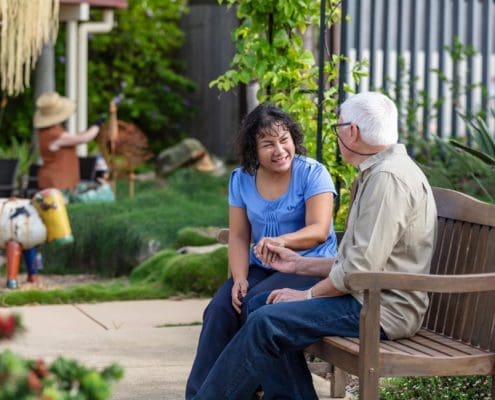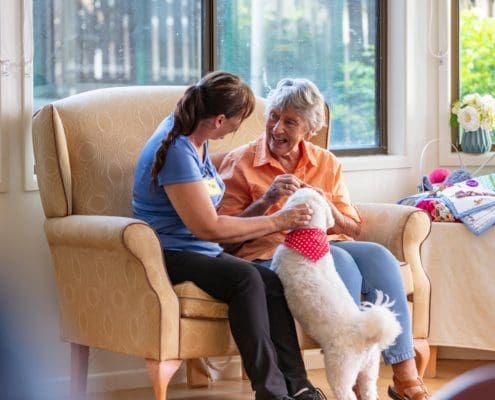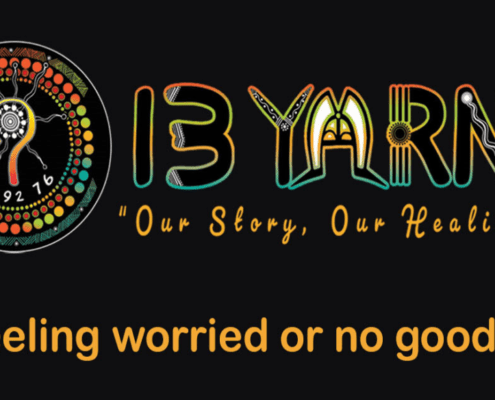 https://seniorsenquiryline.com.au/wp-content/uploads/Blue-Care-RAC-Resident-male-and-Health-Care-worker-High-res-RGB-JPEG-No-Approval-1-scaled.jpg
1067
1600
Emily Gould
https://seniorsenquiryline.com.au/wp-content/uploads/logo-sel-400x49-yellow.png
Emily Gould2025-07-07 15:06:512025-07-07 15:06:56Support at Home
https://seniorsenquiryline.com.au/wp-content/uploads/Blue-Care-RAC-Resident-male-and-Health-Care-worker-High-res-RGB-JPEG-No-Approval-1-scaled.jpg
1067
1600
Emily Gould
https://seniorsenquiryline.com.au/wp-content/uploads/logo-sel-400x49-yellow.png
Emily Gould2025-07-07 15:06:512025-07-07 15:06:56Support at HomeSupport at Home
The new Support at Home program will commence on 1 November 2025, instead of 1 July 2025 as previously stated.
Support at Home will replace the Home Care Packages (HCP) Program and Short-Term Restorative Care (STRC) Programme. The Commonwealth Home Support Programme will transition to the new program no earlier than 1 July 2027.
Support at Home aims to provide:
- Upfront supports to maintain independence, such as allied health, assistive technology and home modifications,
- New classification and budget levels to better meet a person’s aged care needs,
- Participant contributions set by government.
For information about Support at Home visit:
Aged Care Act 2024
The Australian Government has developed a new Aged Care Act to strengthen Australia’s aged care system. This Act will start from 1 July 2025.
This Act responds to 58 recommendations as outlined in the Royal Commission into Aged Care Quality and Safety which released its final report in March 2021.
The Department of Health and Aged Care has created some factsheets about the Aged Care Act 2024 and Support at Home which can be found at here.
Statement of Rights
The Aged Care Act 2024 has a Statement of Rights. This explains what rights older people have when accessing aged care services funded by the Australian Government. The Statement of Rights will replace the current Charter of Aged Care Rights on 1 July 2025.
To better explain the new Act and Statement of Rights visit the Department of Health website.
Single Assessment System
Previously, there were different assessment pathways. As a result, assessments were not consistent and older people often moved between organisations as their needs changed. The Single Assessment System workforce provides a single assessment pathway that can quickly adapt to changing needs, without having to change assessment providers.
The Single Assessment System for aged care has 3 key parts:
- Integrated Assessment Tool (IAT) started as the new tool for assessing eligibility for Australian Government-funded aged care on 1 July 2024
- Single Assessment System workforce will bring together 3 different assessment workforces from 9 December 2024
- New First Nations assessment organisations to provide more culturally safe pathways for older Aboriginal and Torres Strait Islander people will be rolled out from 1 July 2025.
The new system will provide a single assessment pathway to access all Government-funded in-home, flexible care and entry to residential aged care. It will:
- Be simpler to navigate for you, your family and carers
- Ensure you only have to tell your story once
- Adapt to your changing needs, without having to change assessment provider
- Ensure access to assessments in regional, rural and remote areas
- Have shorter wait times for assessments.
For more information, Department of Health have created some fact sheets.
How to apply for an aged care needs assessment?
How you apply for an aged care needs assessment has not changed. But the Single Assessment System aims to make this process smoother.
You, or a representative on your behalf (i.e. family member or carer) will need to:
- Visit the My Aged Care website to ‘Apply for an Assessment Online’
- Call My Aged Care on 1800 200 422 (free call) between 8am and 8pm on weekdays and between 10am and 2pm on Saturdays (local time)
- Book a face-to-face appointment with an Aged Care Specialist Officer (ACSO) at select Services Australia service centres by calling 1800 227 475 between 8am to 5pm on weekdays.
My Aged Care can:
- Register you with My Aged Care, if you are calling for the first time
- Ask you some initial questions to discuss the aged care services you may need
- Refer you to an assessment organisation in your local area.
A Triage Delegate from an assessment organisation will call you within 2 weeks of accepting your referral. This will be a quick call to support you being booked into the right type of aged care needs assessment for your needs.
Do you need help to navigate My Aged Care?
Care Finder
Care finders can help vulnerable older people navigate the aged care system and find support services to improve their quality of life. Care finders can help with both accessing services for the first time and changing or finding new services and supports.
Who can use the service?
The care finder service is not available for everyone. It is specifically for vulnerable older people who need intensive support to access aged care and other local services.
To receive care finder support, a person must:
- Have no carer or support person who can help them, or
- Not have a carer or support person they feel comfortable or trust to support them, and
- Be eligible for government-funded aged care (use the Eligibility checker to learn more).
In addition, they should have one or more of these reasons for needing intensive support:
- Have difficulty communicating because of language or literacy problems
- Find it difficult to understand information and make decisions
- Be reluctant to engage with aged care or government
- Be in an unsafe situation if they do not receive services
How does the care finder service work?
If someone requires this support, then a local care finder organisation can connect them with a dedicated care finder. The care finder will visit them, usually in person. This can be at their home or another place they would like to meet. They will ask questions to understand the person’s situation and support them to work through the steps to address their needs.
Search here to find a provider near you.
If you would like to learn more about the new Act and Support at home, call the Seniors Enquiry Line on 1300 135 500.
.
If you currently receive aged care services, you can contact your provider to discuss if the new Act with affect you.
Share this entry
 https://seniorsenquiryline.com.au/wp-content/uploads/Blue-Care-RAC-Resident-male-and-Health-Care-worker-High-res-RGB-JPEG-No-Approval-1-scaled.jpg
1067
1600
Emily Gould
https://seniorsenquiryline.com.au/wp-content/uploads/logo-sel-400x49-yellow.png
Emily Gould2025-07-07 15:06:512025-07-07 15:06:56Support at Home
https://seniorsenquiryline.com.au/wp-content/uploads/Blue-Care-RAC-Resident-male-and-Health-Care-worker-High-res-RGB-JPEG-No-Approval-1-scaled.jpg
1067
1600
Emily Gould
https://seniorsenquiryline.com.au/wp-content/uploads/logo-sel-400x49-yellow.png
Emily Gould2025-07-07 15:06:512025-07-07 15:06:56Support at Home https://seniorsenquiryline.com.au/wp-content/uploads/Blue-Care-RAC-with-resident-dog-1-Order-5074-1-scaled.jpg
1067
1600
Emily Gould
https://seniorsenquiryline.com.au/wp-content/uploads/logo-sel-400x49-yellow.png
Emily Gould2025-07-07 15:01:152025-07-07 15:01:21Dementia
https://seniorsenquiryline.com.au/wp-content/uploads/Blue-Care-RAC-with-resident-dog-1-Order-5074-1-scaled.jpg
1067
1600
Emily Gould
https://seniorsenquiryline.com.au/wp-content/uploads/logo-sel-400x49-yellow.png
Emily Gould2025-07-07 15:01:152025-07-07 15:01:21Dementia https://seniorsenquiryline.com.au/wp-content/uploads/bigstock-Portrait-of-mature-woman-talki-151304312-1030x684-1.jpg
684
1030
Emily Gould
https://seniorsenquiryline.com.au/wp-content/uploads/logo-sel-400x49-yellow.png
Emily Gould2025-03-13 14:17:502025-03-13 14:19:16Translated Seniors Enquiry Line Brochure
https://seniorsenquiryline.com.au/wp-content/uploads/bigstock-Portrait-of-mature-woman-talki-151304312-1030x684-1.jpg
684
1030
Emily Gould
https://seniorsenquiryline.com.au/wp-content/uploads/logo-sel-400x49-yellow.png
Emily Gould2025-03-13 14:17:502025-03-13 14:19:16Translated Seniors Enquiry Line Brochure https://seniorsenquiryline.com.au/wp-content/uploads/CyberSecurity_1100x800px.jpg
800
1100
Emily Gould
https://seniorsenquiryline.com.au/wp-content/uploads/logo-sel-400x49-yellow.png
Emily Gould2025-03-13 13:11:132025-03-13 13:11:18Scams safety tip: Passwords
https://seniorsenquiryline.com.au/wp-content/uploads/CyberSecurity_1100x800px.jpg
800
1100
Emily Gould
https://seniorsenquiryline.com.au/wp-content/uploads/logo-sel-400x49-yellow.png
Emily Gould2025-03-13 13:11:132025-03-13 13:11:18Scams safety tip: Passwords https://seniorsenquiryline.com.au/wp-content/uploads/Savvy-Shopper-Tips-8.png
683
910
Emily Gould
https://seniorsenquiryline.com.au/wp-content/uploads/logo-sel-400x49-yellow.png
Emily Gould2024-08-15 15:10:262024-08-15 15:20:41Office of Fair Trading’s Top consumer tips to beat cost of living pressures
https://seniorsenquiryline.com.au/wp-content/uploads/Savvy-Shopper-Tips-8.png
683
910
Emily Gould
https://seniorsenquiryline.com.au/wp-content/uploads/logo-sel-400x49-yellow.png
Emily Gould2024-08-15 15:10:262024-08-15 15:20:41Office of Fair Trading’s Top consumer tips to beat cost of living pressures https://seniorsenquiryline.com.au/wp-content/uploads/24_0046LG_SM-Dark-patterns_SH_1.png
1667
1667
Emily Gould
https://seniorsenquiryline.com.au/wp-content/uploads/logo-sel-400x49-yellow.png
Emily Gould2024-04-26 15:41:592024-04-26 16:18:17Dark Patterns
https://seniorsenquiryline.com.au/wp-content/uploads/24_0046LG_SM-Dark-patterns_SH_1.png
1667
1667
Emily Gould
https://seniorsenquiryline.com.au/wp-content/uploads/logo-sel-400x49-yellow.png
Emily Gould2024-04-26 15:41:592024-04-26 16:18:17Dark Patterns https://seniorsenquiryline.com.au/wp-content/uploads/13yarn.png
584
1083
GO Creative Support
https://seniorsenquiryline.com.au/wp-content/uploads/logo-sel-400x49-yellow.png
GO Creative Support2022-09-29 14:56:402022-09-29 15:05:5813 YARN
https://seniorsenquiryline.com.au/wp-content/uploads/13yarn.png
584
1083
GO Creative Support
https://seniorsenquiryline.com.au/wp-content/uploads/logo-sel-400x49-yellow.png
GO Creative Support2022-09-29 14:56:402022-09-29 15:05:5813 YARN https://seniorsenquiryline.com.au/wp-content/uploads/Blue-Care-Community-Staff-and-Woman-Garden-High-res-RGB-JPEG-No-Approval-scaled.jpg
1067
1600
GO Creative Support
https://seniorsenquiryline.com.au/wp-content/uploads/logo-sel-400x49-yellow.png
GO Creative Support2022-09-02 15:24:322023-03-08 17:08:32Centrelink’s Aged Care Specialists
https://seniorsenquiryline.com.au/wp-content/uploads/Blue-Care-Community-Staff-and-Woman-Garden-High-res-RGB-JPEG-No-Approval-scaled.jpg
1067
1600
GO Creative Support
https://seniorsenquiryline.com.au/wp-content/uploads/logo-sel-400x49-yellow.png
GO Creative Support2022-09-02 15:24:322023-03-08 17:08:32Centrelink’s Aged Care Specialists https://seniorsenquiryline.com.au/wp-content/uploads/Blue-Care-Older-Couple-Walking-Stick-High-res-RGB-JPEG-No-Approval-scaled.jpg
1066
1600
GO Creative Support
https://seniorsenquiryline.com.au/wp-content/uploads/logo-sel-400x49-yellow.png
GO Creative Support2022-08-25 11:05:572022-10-26 11:15:40Dementia Supports
https://seniorsenquiryline.com.au/wp-content/uploads/Blue-Care-Older-Couple-Walking-Stick-High-res-RGB-JPEG-No-Approval-scaled.jpg
1066
1600
GO Creative Support
https://seniorsenquiryline.com.au/wp-content/uploads/logo-sel-400x49-yellow.png
GO Creative Support2022-08-25 11:05:572022-10-26 11:15:40Dementia Supports





